Setting Up Your Pickup's Pole Pieces For Optimal Performance
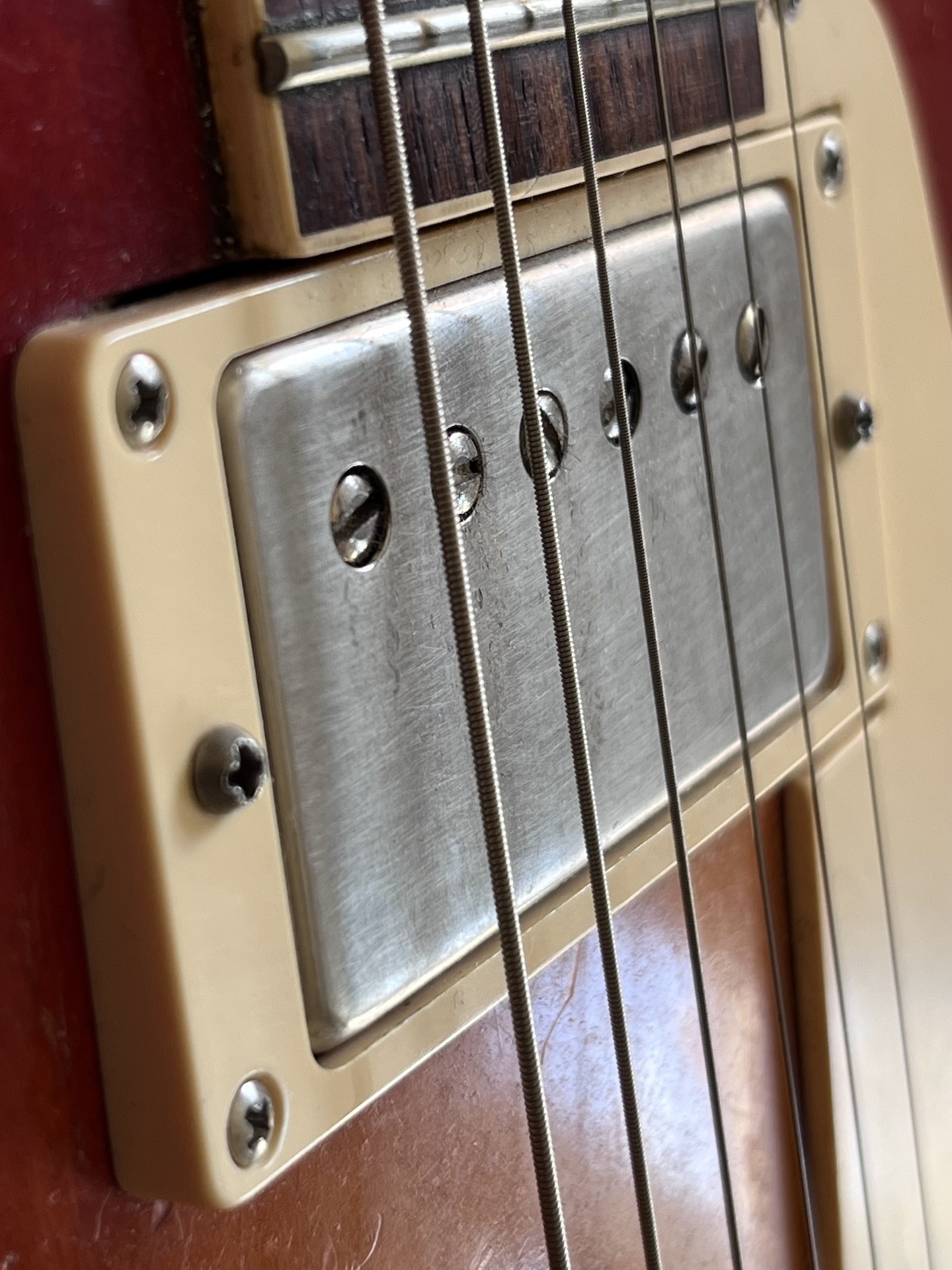
Let’s talk about the pole pieces on our pickups.
How do we set them up?
What can we do to get the best out them?
What do we listen for when we look for balance?
Setup Philosophy
Now of course there’s setup to taste, playing style and we can scientifically explain why you can come up with a technically optimal setting.
But there’s a nice philosophy on why setting it up in this, what appears to be visually off-set way, actually gets us the balance and response we desire. I’ve learned it from a guitar tech who rewound some of my pickups.
So, let’s get into it.
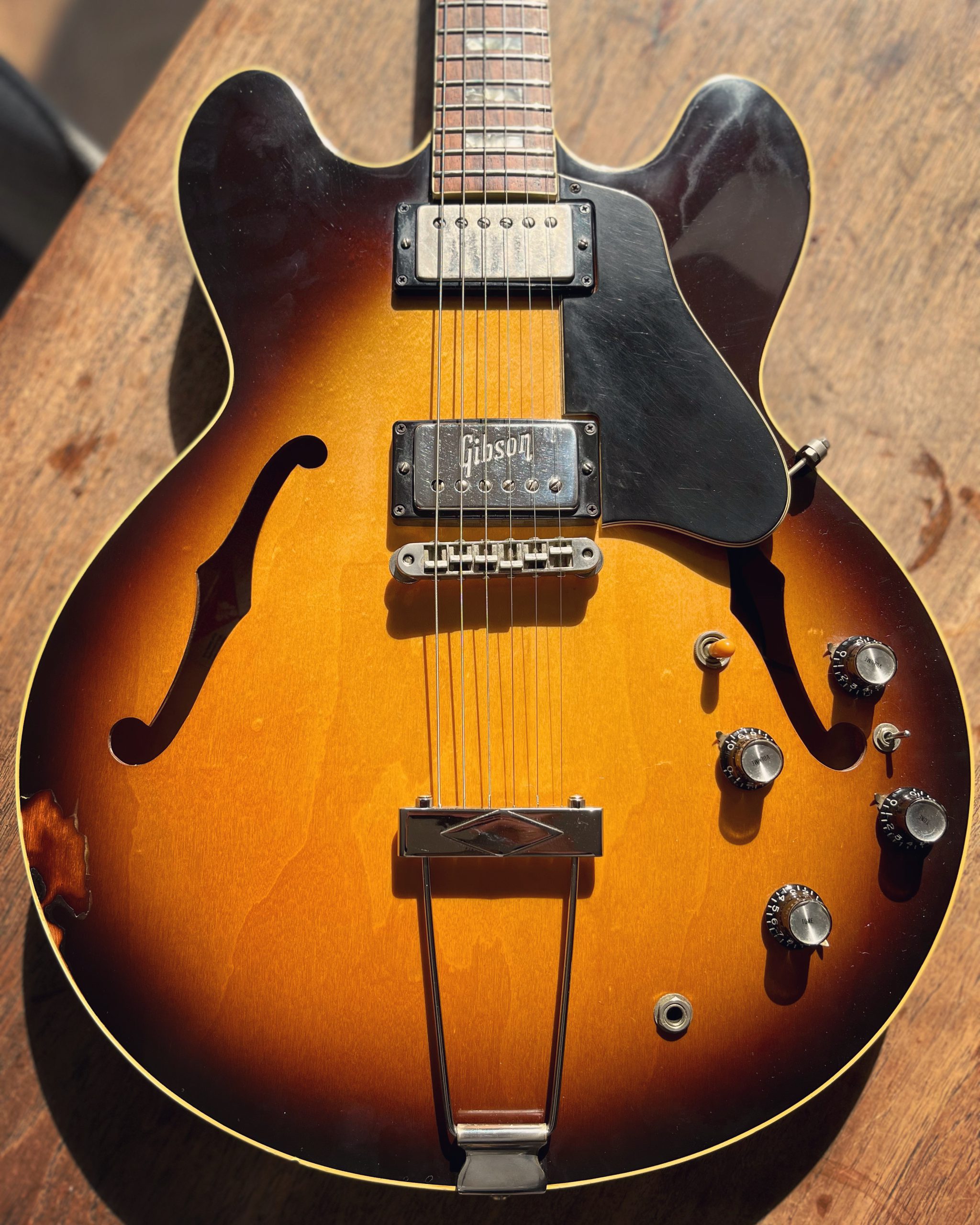
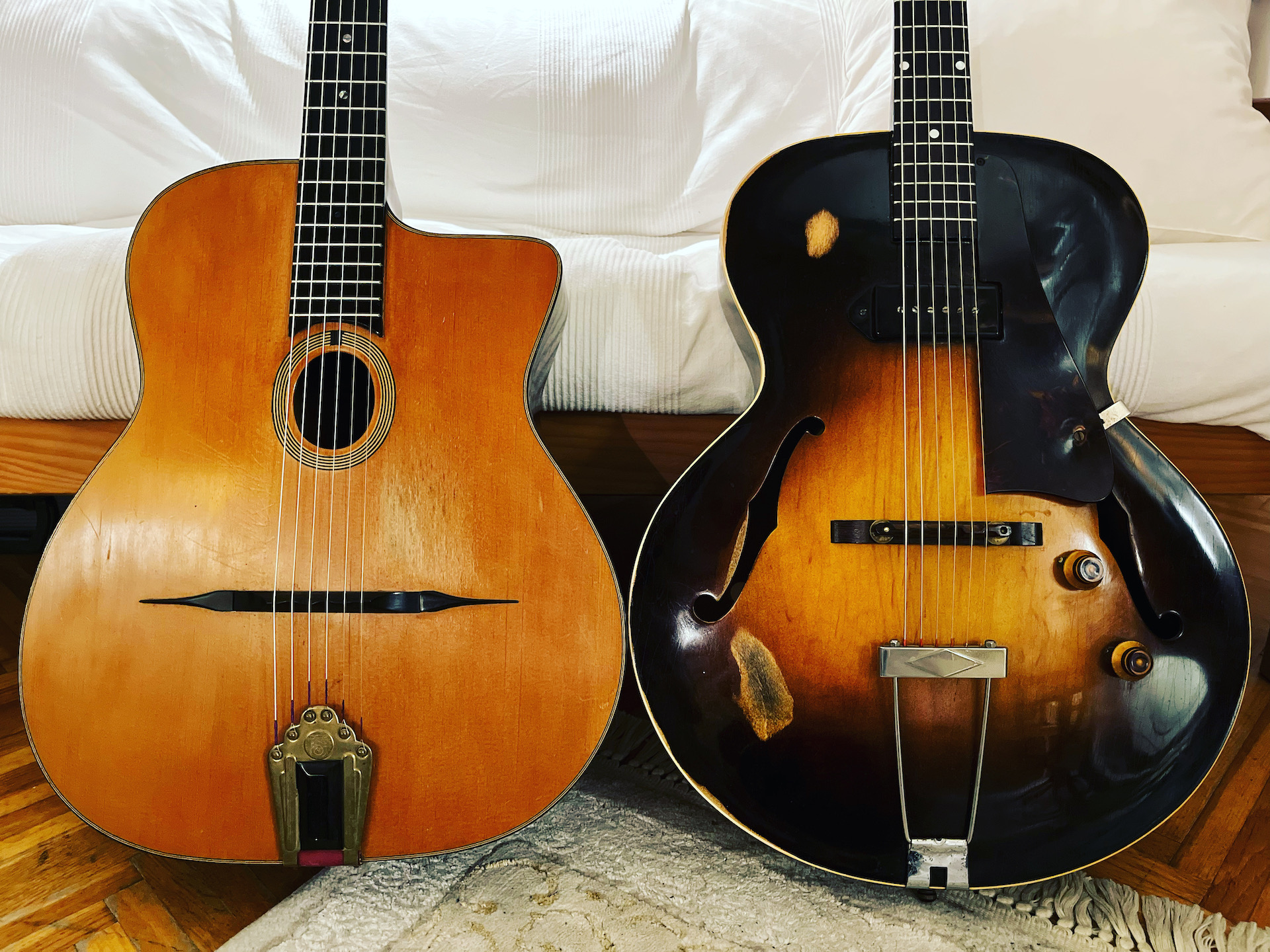
History On FlatWounds & Roundwounds
So, in the old days guitars obviously came with different string guages. Now, I’ve always thought that flat wounds came first when it comes to electric guitars, as we look at the first electrics as the Jazz-Guitars, and earlier even amplified acoustics with a solid top.
Telecaster String Guage
So this flat wounds first idea I’ve had in my mind appears to be untrue as The telecaster came shipped with 13’ round wounds.
That probably sounds fantastic. That stiff plank and the brake cables loaded on to it. Might give that a go and will let you know how that worked out 😉
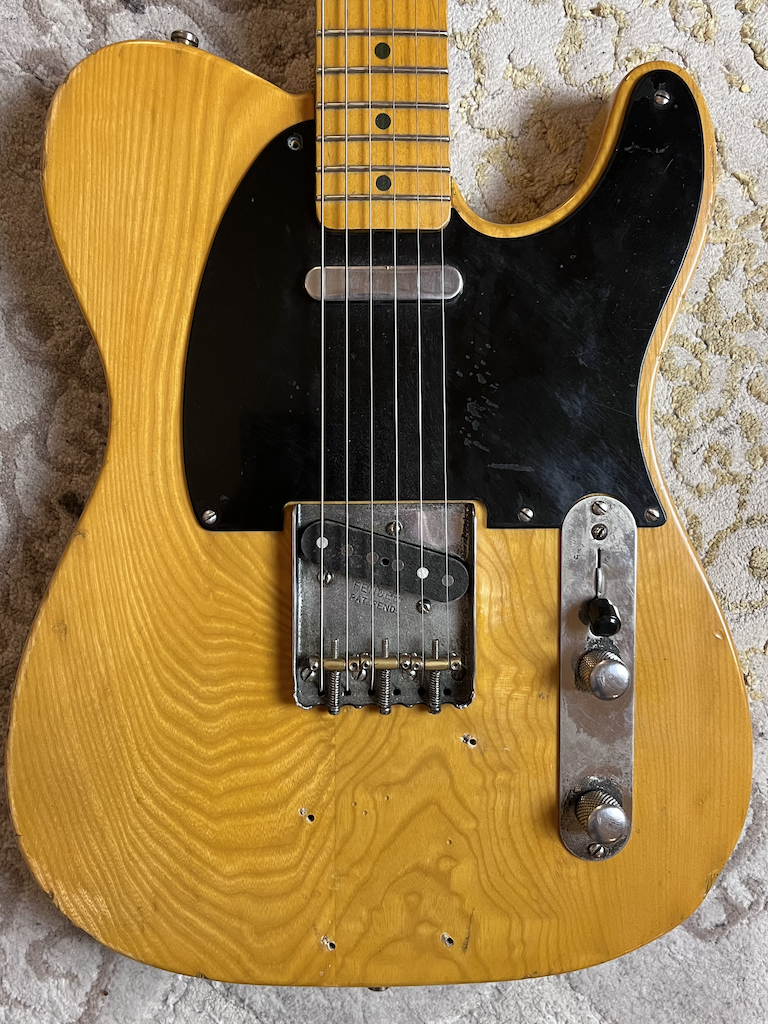
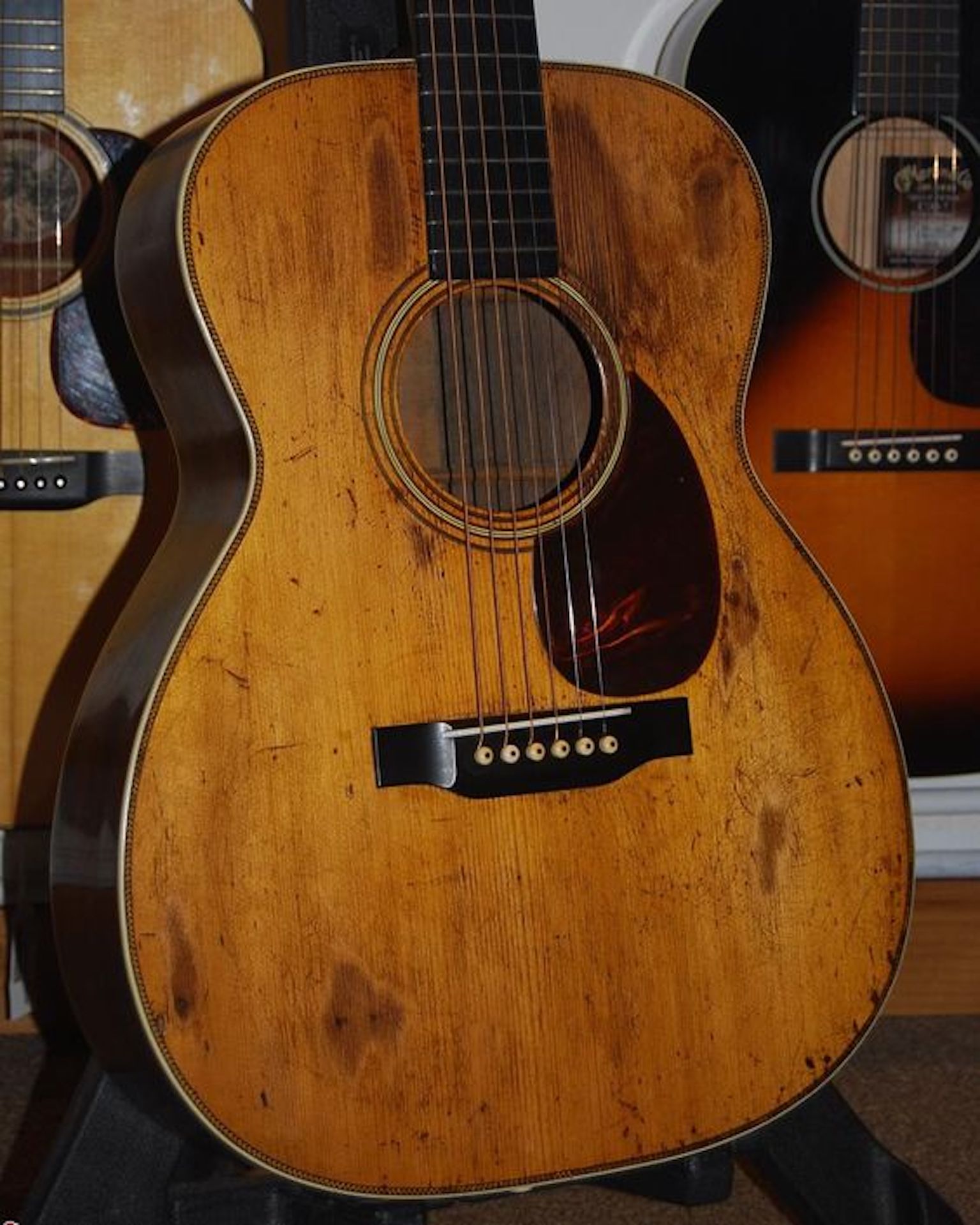
Acoustic Archtops & Flattops
And of course it totally makes sense that round wounds were already there if you look at the acoustic guitar, and remember where we come from…
Stick a floating Shaller there somewhere and wail! 😉
Roundwounds & Plain Strings
As thinner strings became more popular because the bending of strings became common, guitarists would put a banjo string for an high E, and skip down a string in the to end up with a set that would represent a .09 or .10 set, and have a plain G string as a result, to rock and roll.
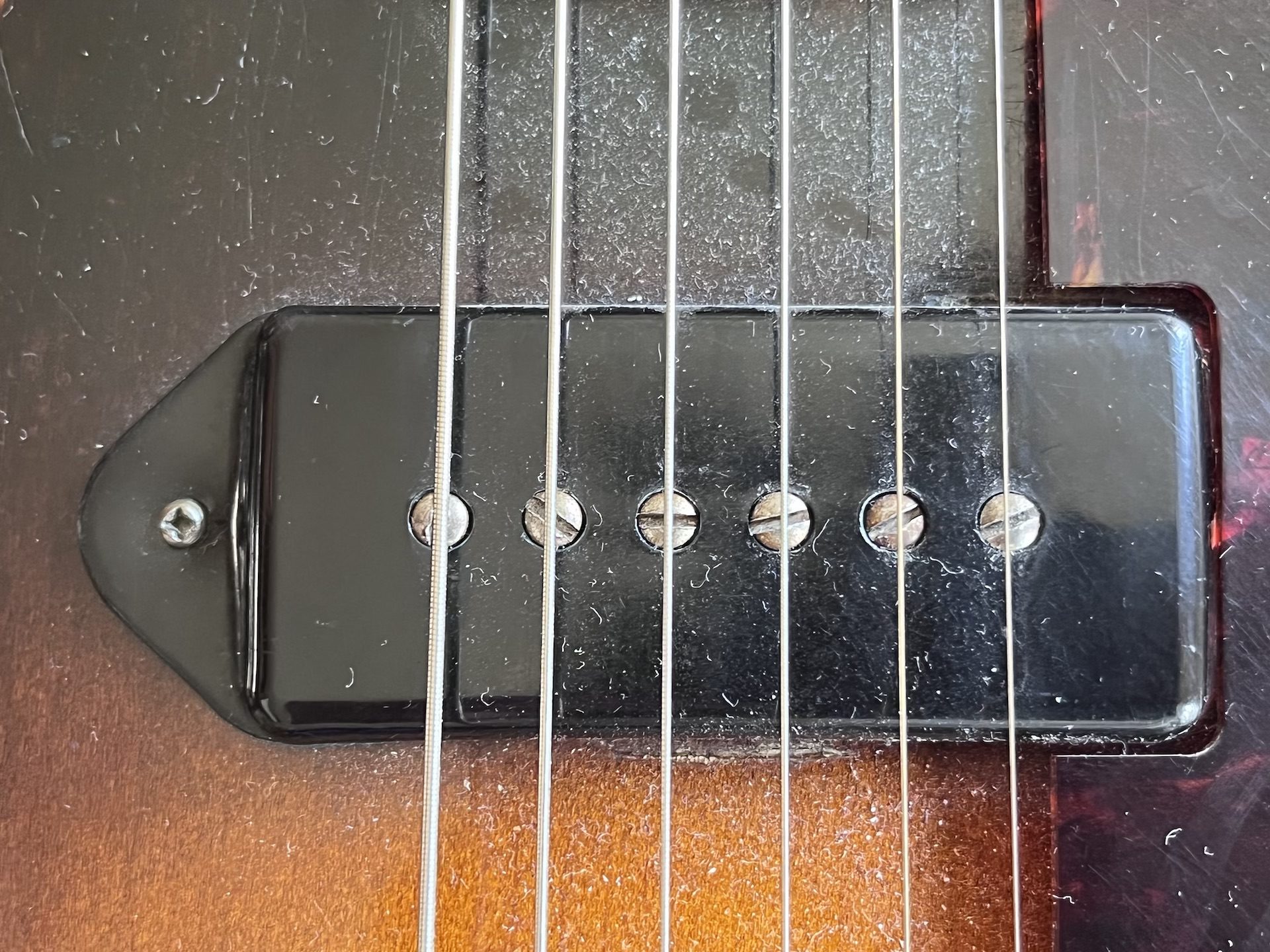
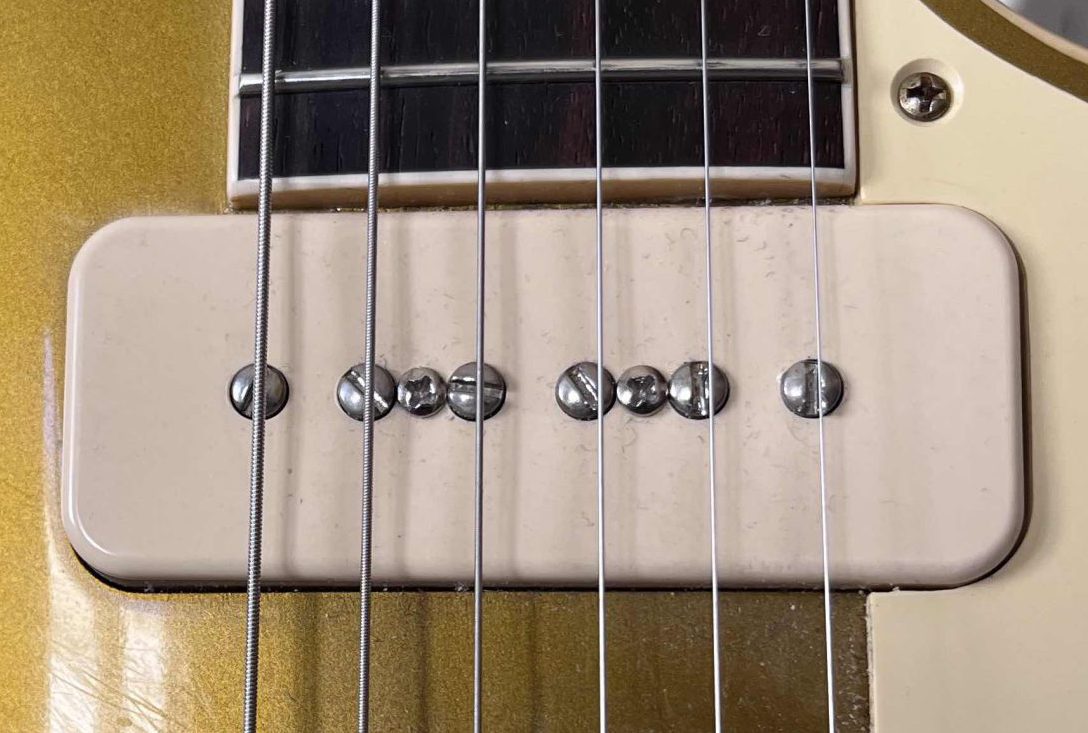
Ok, Why does This Matter?
So why this all matters is that a round wound string has a different voice, a different volume then a plain string. Therefore, on a Jazzguitar with a round wound G string you might end up with a different pole piece setting. The pickups never really changed to accommodate that change of voice so to say, of going to a plain string. Which is good, I guess…
Natural (Minor)
Guage Imperfections
Now, if you would play your electric guitar without an amplifier. And I’m sure that fellow guitarists recognize this feeling- if you would run through your strings low to high, your G tends to stick out dynamically. It’s annoying, and because harmonically it’s also often a major of minor 3rd and the guitar isn’t perfect in the sense that the 3rd sits slight lower in nature then the half steps given to us. THAT is annoying. Harmonically not fully pleasing and also too loud.
Now of course, all within tolerance and the sizes have come about to create as good of a balance of tone and playability as possible.
Amplitude, as in the actual back and forth movement of the string under influence of the tensions they need for their particular pitch all influence the natural volume or ‘flux’ they produce above the pickup. That’s as technical as we need to bring it for now to take in account what produces that volume response.
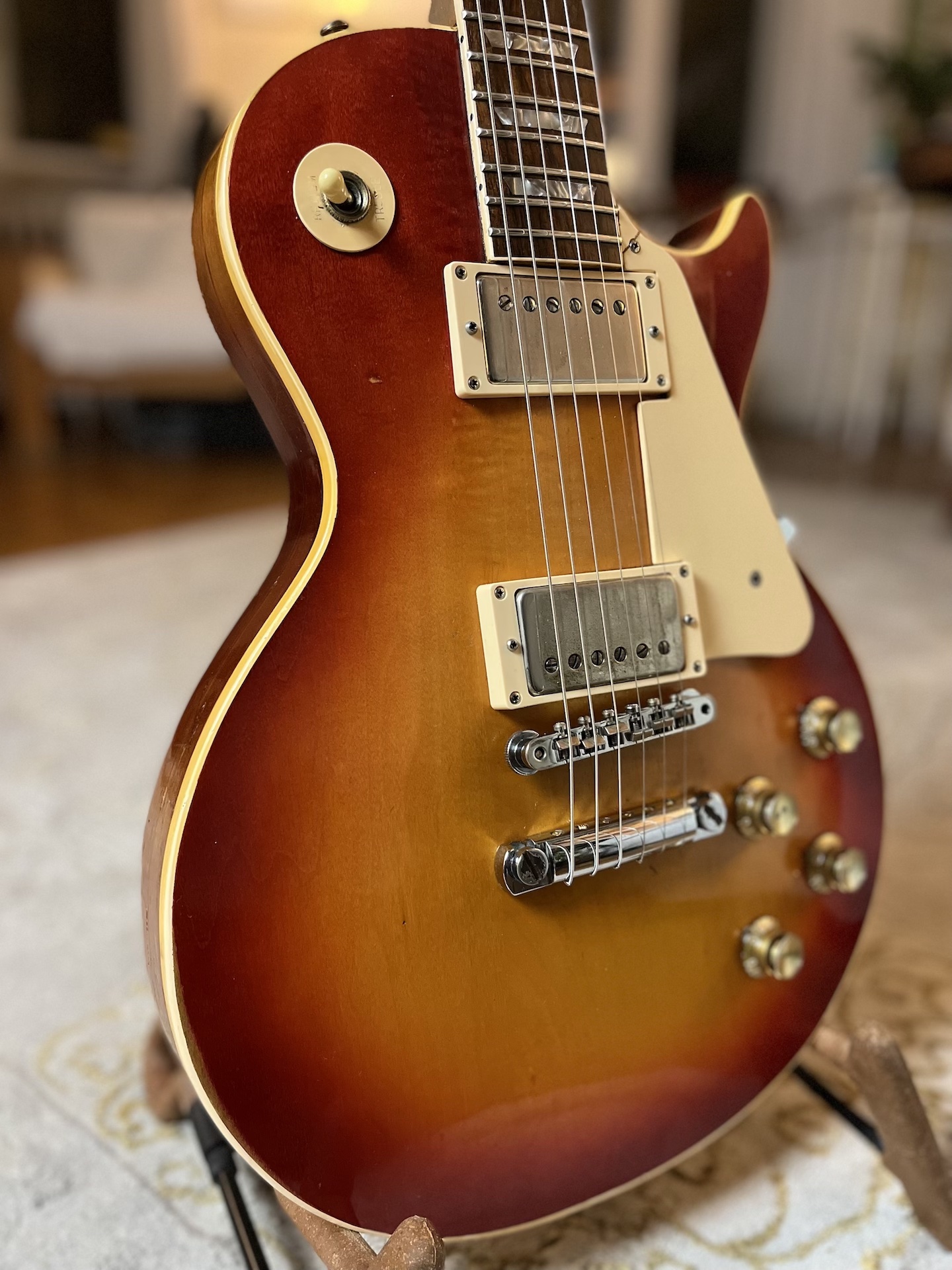
Setting The Pole Pieces
For Optimal Balance
Even though the string gauge is supposed to provide correctly balanced strings, with a modern set of strings, and a go to basic pickup setting, maybe after a bit of a correction for radius, we need to take it a a little further. So here’s where we’re going to look at what we need to do to realy get the best out of our pickup.
Through gauge and string tension. The D tends to be the weakest, and the G the opposite dominant force. Your top 2 strings need a little help and the low E can easily become a bit overwhelming as well. Hell, the weird thing is that you might even have grown accustomed to this so much that we compensate on your playing intensity, especially in clean settings to balance things out there.
So of course we’re not just going to turn screws. We’re going to listen to some chords and hear the functions of each string within the chords. Really listening for balance by playing guitar and shut the fuck up. And different chords, because a major 3rd can sit differently in the mix then a perfect 5th. Or a tonic on the top of the arrangement might have a different harmonic weight than a major 7, so to say. But ok, let’s not make this video too heavy on the theory and keep it simple. We go on until we can separate each function within a 6 string chord. We listen for separation as well as a musical blend, where we can ‘locate’ the string with out ears. It can be challenging if you do this for the first time, but don’t worry. It’s a great little exercise.
How Does That Sound, Then?
Here, we’ll do a full service on a 72′, including the proces of setting up the pickups, from timecode 59:30.